Ivan Čuk
Editorial
Tony Froissart, Thierry Terret
LEON ŠTUKELJ, OLYMPIC CHAMPION 1924 IN GYMNASTICS. PERFORMANCES AND LEGACY
Mateus Henrique de Oliveira, Leticia Bartholomeu de Queiroz Lima, Andrize Ramires Costa
WOMEN’S ARTISTIC GYMNASTICS ROUTINE COMPOSITION AT RIO 2016 OLYMPIC GAMES: A TECHNICAL ANALYSIS OF BALANCE BEAM AND FLOOR EXERCISE ROUTINES
Takashi Sano, Shohei Kokudo
EXAMINATION OF MOVEMENT PATTERNS THAT REFLECT THE PROFICIENCY LEVEL IN STRADDLE VAULT FOR ELEMENTARY SCHOOL CHILDREN
Vasiliki Kaioglou, Konstantinos Karteroliotis, Maria Koutsouba, Fotini Venetsanou
PHYSICAL LITERACY OF FEMALE RECREATIONAL GYMNASTS
George Dallas, Costas Dallas, Vasiliki Kolovou, Panagiotis Pappas, Vasilis Mellos, Giorgos Paradisis
ACUTE EFFECTS OF BILATERAL AND UNILATERAL WHOLE BODY VIBRATION TRAINING ON JUMPING ABILITY, ASYMMETRY, AND BILATERAL DEFICIT ON FORMER ARTISTIC GYMNASTS
Ivanova Vesela Ivanova
SPORTS PROFILE OF ELITE ATHLETES IN RHYTHMIC GYMNASTICS
Maria Letícia Jardim, Ana Clara Justino Valencio, Lizia Nardi Menegassi, Ricardo Azevedo Da Silva, Randhall Bruce Carteri
RISKS OF EATING AND IMAGE DISORDERS ARE CORRELATED WITH ENERGY AND MACRONUTRIENT INADEQUACIES IN YOUTH RHYTHMIC GYMNASTICS
Pınar Tatlıbal, Emine Kutlay, Onur Oral
THE EFFECT OF SCORE COMPONENTS ON TOTAL SCORE IN THE INDIVIDUAL APPARATUS QUALIFICATION OF 1ST RHYTHMIC GYMNASTICS JUNIOR WORLD CHAMPIONSHIPS
Johanna Weber
ARE THERE CONNECTIONS BETWEEN HANDEDNESS, COMPETITIVE RESULTS AND MOTIVATION IN WHEEL GYMNASTS?
Anton Gajdoš, Michal Bábela
SHORT HISTORICAL NOTES XXIII
Ivan Čuk
Reviewers 2021
Ivan Čuk
Editorial
Dear friends,
We are well into 2022 and it is late for New Year wishes, nevertheless, I hope you will have a happy and healthy 2022. The pandemic has slowed down a little and has so far not put any limits on our work and research. May it end soon in all parts of the world.
It has been 100 years since the World Championship in Artistic Gymnastics was held in Ljubljana, Slovenia, in 1922. It was the first international competition for Leon Štukelj who later made history at the OG in Paris in 1924 and won gold medals in the all-around and high bar. The first article in the journal is by French historians Tony Froissart and Thierry Terret. They are analyzing Leon Štukelj's legacy on modern artistic gymnastics. I believe Leon Štukelj would be delighted by their paper.
Other contributing authors in this issue come from Brazil, Germany, Japan, Bulgaria, Turkey and Greece. Again, many different aspects of gymnastics are presented.
There are new challenges for researchers too. In the middle of October, Flavio Bessi organised International Freiburg Gymnastics Congress online. You can find it at https://www.sport.uni-freiburg.de/en/events/international-gymnastics-congress.
Anton Gajdoš and Michal Babela drafted the 23rd short historical note introducing Silvester Csolany from Hungary who passed away in January after a long illness caused by COVID-19.
Just to remind you, if you cite the journal, its abbreviation in the Web of Knowledge is SCI GYMN J.
I wish you enjoyable reading and many new ideas for research projects and articles.
Tony Froissart, Thierry Terret
LEON ŠTUKELJ, OLYMPIC CHAMPION 1924 IN GYMNASTICS. PERFORMANCES AND LEGACY
Olympic champion in the general event in gymnastics at the 8th Olympiad in 1924, Leon Štukelj performed remarkably in international competitions. This article proposes to analyze the innovative character of the performance carried out by the gymnast of the Yugoslavian team, to appreciate the context of its realization and to evaluate his legacies. Through his performance, Štukelj paved the way to major evolutions in gymnastics, especially in the rings event where he excelled. Certain technical regulations of international gymnastics seem to have been especially inspired by the elements he performed in 1924. Štukelj was also considered an emblematic figure of the educational method developed by the Yugoslav Sokols. As a consequence, his imprint as a symbol of a moral and physical system of training was also very strong. The paper is positioned in the field of cultural history. It aims to study the evolution of Štukelj’s performance and legacy. In addition to the historiography of the 1924 Olympic Games, it uses various primary sources: the French daily press published on the occasion of the 1924 Olympic Games, the archives of the Lausanne Olympic Study Center, the archives of the city of Colombes, the official reports of the 1924, 1928 and 1936 Olympic Games, the archives of the International Gymnastics Federation and Štukelj’s autobiography (1989).
Keyswords: Štukelj, Olympic Games 1924, Gymnastics, Legacy, Sokol.
Mateus Henrique de Oliveira, Leticia Bartholomeu de Queiroz Lima, Andrize Ramires Costa
WOMEN’S ARTISTIC GYMNASTICS ROUTINE COMPOSITION AT RIO 2016 OLYMPIC GAMES: A TECHNICAL ANALYSIS OF BALANCE BEAM AND FLOOR EXERCISE ROUTINES
Artistic gymnastics is a sport comprising a variety of movements performed on apparatus, connected by the art of movement. The Code of Points is a document that brings together all the rules of this sport; it guides the work of coaches and gymnasts, helping to compose the routines presented in competitions. This study focuses on women's artistic gymnastics and the implementation of its rules, established by the Code of Points 2013-2016. It aims to analyze the elements that composed the gymnasts' routines during the last Olympic Games (Rio 2016) and identify the possible technical relations between the composition of the balance beam and the floor exercises in line with the current Code. For this purpose, we carried out a video analysis of 82 balance beam routines and 82 floor exercise routines, in total 164 routines performed by athletes competing in women's artistic gymnastics at the Rio 2016 Olympic Games qualifying competition. We observed that the Code of Points is still little explored, and gymnasts use only a few of the elements available. In this sense, the International Gymnastics Federation and, more specifically, the Code of Points, which regulates the sport, should devise strategies for better usage of the elements available within the stipulated rules.
Keyswords: Routine composition, Code of Points, Olympic Games.
Takashi Sano, Shohei Kokudo
EXAMINATION OF MOVEMENT PATTERNS THAT REFLECT THE PROFICIENCY LEVEL IN STRADDLE VAULT FOR ELEMENTARY SCHOOL CHILDREN
The purpose of the present study was to examine movement patterns that reflect the proficiency of straddle vault in elementary school students and to clarify the differences in the movement of technique depending on gender, grade, and height of the vaulting box. The subjects were 453 children (220 boys, 233 girls) from the 3rd-6th grade. Their straddle vault movements were recorded from the left and front sides and scored by the observational evaluation criterion. Latent class analysis was used to extract the movement patterns of straddle vault. The probability of belonging to each movement pattern was tabulated by gender, grade, and height of the vaulting box. To investigate the characteristics of the movements for gender, grade, and height of the box, we performed a χ2 test and residual analysis. As a result of identifying the movement patterns by latent class analysis, it became clear that the straddle vault movements of elementary school children can be categorized into five groups: Failure vaulting, Arm dependent vaulting, Unstable landing vaulting, Stable vaulting, and Strong push-off vaulting. There was no difference between boys and girls in the appearance rate of the movement patterns (χ2=7.707, p>0.05). Although there was a significant difference in the appearance rate of patterns between grades (χ2=42.615, p<0.01), but highly proficient movements didn't tend to increase as the grades increased. The five movement patterns clarified in this study are thought to lead to the detailed evaluation of children's straddle vault movements and the enhancement of instruction according to their proficiency.
Keywords: physical education, proficiency, vault, elementary school, latent class analysis.
Vasiliki Kaioglou, Konstantinos Karteroliotis, Maria Koutsouba, Fotini Venetsanou
PHYSICAL LITERACY OF FEMALE RECREATIONAL GYMNASTS
Children, especially girls, do not demonstrate physical activity (PA) and physical literacy (PL) levels associated with sufficient health benefits. Gymnastics is thought to be a suitable field for reinforcing children’s PL and related elements, such as PA. This study aimed at assessing the PL level of female recreational gymnasts to detect areas of sufficient and insufficient development in their PL. For that, 101 8-12-year-old girls (Mage=10.1±1.4), who participated in recreational gymnastics programs for at least one year (Myears=3.7±2.0), were assessed by using the Canadian Assessment of Physical Literacy (CAPL-2). Average scores (M±SD) for total PL and its related elements were calculated for all participants. Accordingly, each of them was classified into one out of the four CAPL-2’s interpretive categories, indicating whether she was at a non-recommended (“beginning”, “progressing”) or recommended level (“achieving”, excelling”). Regression analysis examined the association of total PL score with participants’ age and years of participation in gymnastics. Although the female gymnasts, similarly to same-age children worldwide, did not present adequate PL level, their fitness was sufficiently developed and they were excessively motivated/confident for PA. Adversely, other PL elements, i.e., their motor competence, PA knowledge, PA participation, were below the recommended levels, indicating deficiencies in their PL development. Age was associated with total PL (b=.440, p=.0001), whereas the years of gymnastics’ participation were not (b=.090, p=.325). Participation in recreational gymnastics is important for enhancing several PL elements of female gymnasts; however, for developing the entire range of PL elements, the implementation of multicomponent gymnastics programs must be prioritized.
Keywords: Motor competence, Physical fitness, Physical activity, Health-related fitness knowledge, Motivation
George Dallas, Costas Dallas, Vasiliki Kolovou, Panagiotis Pappas, Vasilis Mellos, Giorgos Paradisis
ACUTE EFFECTS OF BILATERAL AND UNILATERAL WHOLE BODY VIBRATION TRAINING ON JUMPING ABILITY, ASYMMETRY, AND BILATERAL DEFICIT ON FORMER ARTISTIC GYMNASTS
Whole-body vibration (WBV) has been used to improve jumping ability, muscle strength, power, and performance in various sports. Bilateral deficit (BLD) is defined as the difference in the magnitude of the maximum force during single or double support. The present study investigated the effect of unilateral and bilateral whole-body vibration (WBV) exercise on jumping ability, asymmetry and BLD on former artistic gymnasts. Twenty-eight former artistic gymnasts volunteered to participate in this study. Participants performed 4 experimental protocols on nonconsecutive days in a random order. Each protocol included a 3-min-warm-up running on the treadmill at 2.22 m.s -1, followed by a 2-min rest. The intervention protocols were: a) WBV with feet [bipedal] (WBVB), b) WBV with single foot [unilateral] (WBVU), c) WBVB with the device turn-off (NWBVB), and d) WBVU with the device turn-off (NWBVU). The dependent variables were the squat jump (SJ) and counter movement jump (CMJ) with both feet (bilateral) and with single leg (unilateral). Results showed a significant interaction effect between the condition and time on SJ on both condition (bilateral and unilateral) and CMJ, whereas significant main effect was found for the condition and for time on SJ. Conclusively, the WBV unilateral condition improves significantly lower limbs symmetry during SJ performance. Further, bilateral WBV (WBV B) was the most effective condition on bilateral and unilateral SJ and CMJ performance.
Keywords: Bilateral deficit, Single leg vertical jump, Asymmetry
Ivanova Vesela Ivanova
SPORTS PROFILE OF ELITE ATHLETES IN RHYTHMIC GYMNASTICS
Elite athletes are competitors who combine in themselves exceptional talent, many years of hard work and distinctive psychological qualities. Highly qualified rhythmic gymnasts do not differ from this definition, as their sports profile includes all these characteristics. The aim of this study is to develop a methodology to create the sports profile of elite competitors in rhythmic gymnastics on the basis of current competitors from the USA, Singapore and Taiwan and to compare the obtained results. This could help us assess the current habits of these gymnasts, the positive or negative impact of those habits on their performance, and the necessary changes that need to be made to optimize the training process. The results of the current study and the statistical data processing from the conducted experiment showed that the three studied teams of elite athletes (total of 63 gymnasts) demonstrated strong commitment and engagement in the training process. Generally, the Singaporean and Taiwanese athletes had difficulties in communication with their coach and lagged behind in the development of technical qualities and mental skills for effective adaptation compared to their colleagues from the United States. At the same time, however, they showed a higher degree of self-awareness for improvement. On the other hand, the athletes from the US demonstrated shortcomings in Consistency in training. The numerical values also showed that some of the US athletes demonstrated limitations in the development of physical qualities which could affect their professional sports development in the future.
Keywords: Elite rhythmic gymnasts, Sports profile, Characteristics.
Maria Letícia Jardim, Ana Clara Justino Valencio, Lizia Nardi Menegassi, Ricardo Azevedo Da Silva, Randhall Bruce Carteri
RISKS OF EATING AND IMAGE DISORDERS ARE CORRELATED WITH ENERGY AND MACRONUTRIENT INADEQUACIES IN YOUTH RHYTHMIC GYMNASTICS
Rhythmic Gymnastics is an aesthetic sport with specific requirements that can enhance the development of eating disorders, leading to important nutritional inadequacies potentially compromising sports performance and health. Thus, this work aims to analyze associations between the risk of eating disorders and the perception of body image and eating habits in Brazilian national-level rhythmic gymnastics athletes. Eighteen female athletes aged between 12 and 19 responded to two 24-hour food recalls, the standardized Eating Attitudes Test (EAT-26), the Body Esteem Scale (BES), and the Body Shape Questionnaire (BSQ). There was an association between the risk of eating disorders, distortion of body image, and body mass index (0.51; p = 0.025 and -0.50; p = 0.029). Inverse correlations were found between carbohydrate and lipid intake per kilogram with the risk of eating disorders (-0.69; p = 0.001, and -0.49; p = 0.03) and with body image distortion (-0.63; p = 0.004, and -0.63; p = 0.04). Also, inverse correlations between energy intake per kilogram and the risk of eating disorders (-0.62; p = 0.004) and body image distortion (-0.70; p = 0.001) were found. Our results highlight the importance of a multidisciplinary approach to increase awareness and prevent possible eating disorders in this population.
Keywords: Eating behavior, Dietary habits, Mental health, Sports psychology.
Pınar Tatlıbal, Emine Kutlay, Onur Oral
THE EFFECT OF SCORE COMPONENTS ON TOTAL SCORE IN THE INDIVIDUAL APPARATUS QUALIFICATION OF 1ST RHYTHMIC GYMNASTICS JUNIOR WORLD CHAMPIONSHIPS
The study aims to determine the effect of the total score components on the total score and the differences between the score components in the 1st Rhythmic Gymnastics Junior World Championship individual apparatus qualification held in Moscow, Russian Federation, in2019. In this study, 1708 scores of 138 gymnasts from 61 countries were analyzed in all routines. For all routines, the effects of difficulty subgroup scores (D1-2, D3-4) on difficulty total scores (DTS), execution subgroup deduction scores (E1-2, E3-4-5-6) on execution total scores (ETS), and the effects of DTS and ETS on total scores (TS) were examined. Descriptive statistics, linear regression, and one-way ANOVA analysis were used. In linear regression analysis results, it was observed that the effect of DTS on TS was higher than the effect of ETS on TS in rope, ball, clubs, and ribbon routines. Among all apparatus, the effects of DTS and ETS on TS were observed as the highest in the clubs routines and the lowest in the rope routines. The effect of D3-4 on TS was higher than D1-2. The effect of deduction E3-4-5-6 on TS was higher than E1-2 (p<0.001). Statistically significant differences were found only between the DTS mean scores of the apparatus (p<0.000) analyzed with one-way ANOVA. This has led to a conclusion that the balance in the effect of TS components on TS scores will contribute to the integrity and the artistic impact of routines and also lead to better results, therefore more time should be devoted to rope and ribbon routines in the early stages of physical preparation.
Keywords: Rhythmic gymnastics, Individual routines, Score analysis
Johanna Weber
ARE THERE CONNECTIONS BETWEEN HANDEDNESS, COMPETITIVE RESULTS AND MOTIVATION IN WHEEL GYMNASTS?
Handedness is a performance-influencing factor in many competitive sports. In female team handball, psychological factors such as motivation have been connected to handedness. It should be researched whether this is also the case in wheel gymnastics and whether motivation is related to performance or handedness. For this purpose, 203 German wheel gymnasts were studied. There are significant differences in motivational aspects between gymnasts of different handedness within the straight line discipline. No differences were found in the all-around. There were not enough cases of gymnasts competing in spiral or vault only. When comparing the prevalence of different types of handedness in the general population to those among wheel gymnasts, no specific evaluation could be conducted for male gymnasts due to too few cases, although it should be noted that all 13 male participants were right-handed. When comparing the percentages of the left-handed and ambidextrous among female gymnasts to those in the general female population, it is evident that there is a higher percentage of ambidexters and left-handers among wheel gymnasts than in the general female population. There are differences in the percentages of female gymnasts of different handedness competing in straight line and all-around. There are correlations between percentage of handedness and competitive results when considering quintiles of competitive results (e. g. r = 0.949 and p ≤ 0.014 for technical difficulty in left-handed athletes). Our results suggest that it might be necessary to consider handedness when it comes to individual coaching and selection.
Keywords: Handedness, Competitive results, Motivation, Disciplines, Performance.
Johanna Weber
DEMANDS PROFILE IN WHEEL GYMNASTICS: DIFFERENCES BETWEEN ATHLETES AT DIFFERENT PERFORMANCE LEVELS, BETWEEN GENDERS AND IN DIFFERENT DISCIPLINES
Performance in many competitive sports is limited by motivation as well as constitutional factors. In this paper the question is addressed whether motivation is related to performance in wheel gymnastics and whether the manifestation of motivation is related to gender, performance level or competitive discipline. To this end, 203 German wheel gymnasts of varying performance level were studied. Different levels of motivation, competitive results and percentages of body fat were found in different groups of gymnasts: gymnasts performing in all-around/ straight line male and female athletes and in gymnasts competing at different performance levels. Also, female and male gymnasts differed significantly in body fat percentage, age and overall merit. Differences between performance levels underline the importance of individual coaching regarding, e. g., hope for success (p ≤ 0.003, η2 = 0.108) and other performance limiting factors. Further, individual coaching for athletes competing in different disciplines seems necessary, as shown by differences in the overall performance motive (p ≤ 0.033, η2 = 0.042). Therefore, each group of athletes should receive coaching tailored to their needs during training and performance that considers their individual background and circumstances, in order to optimize performance.
Keywords: Body fat percentage, Disciplines, Performance, Gender, Motivation.
Anton Gajdoš, Michal Bábela
SHORT HISTORICAL NOTES XXIII
Ivan Čuk
Reviewers 2021






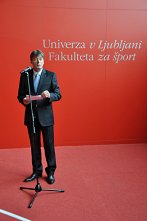



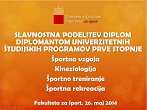




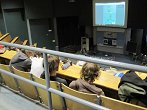


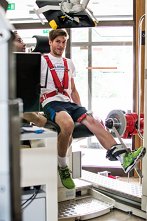

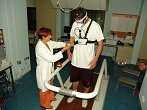





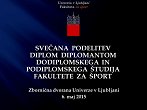







.png)